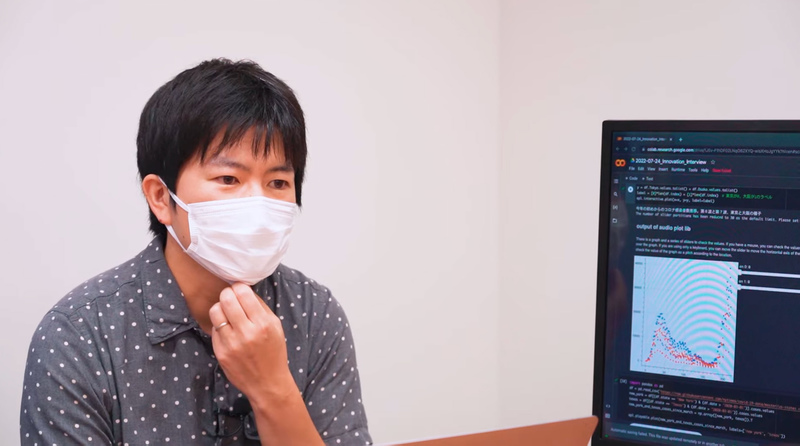Interviews

A New Approach to Supporting ICT Education for the Visually Impaired (Part 1)
Takashi Hasuo
Through his own experience and research, Takashi Hasuo is developing a new education approach for the visually impaired.
Interviewer & Japanese Writer: Yamamoto Takaya; Translation & Editing: Matthew Cherry
Takashi Hasuo’s title for his entry into the 2020 INNO-vation Program’s Disruptive Challenge was as ambitious as it was challenging: Improving Accessibility of AI Technology Development for a Diversity-Inclusive Sustainable AI Society. This research focused on making AI development and data science education easier to learn for those with visual impairments.
Hasuo had already gained experience in AI development and data science through his job. He opened up about his time as a student, where he revealed that he became unable to see clearly due to an illness. This proved to be quite an obstacle for him to overcome, though it would eventually prove helpful in his research.
“In recent years, many people are starting to study AI and data science due to the increasing importance of system development education,” Hasuo explained. “Even in Japan, government guidelines on school curriculum have been revised, and information classes now include AI and data science. Be that as it may, data science often relies on graphs to efficiently display most of its data, so those with visual impairments have often been limited by that aspect. I started my research because I felt that it was far more likely for people with these impairments to get left behind in data science education.”
Graphs are inherently a vehicle to help people visually understand changes in numbers. Hasuo linked the size of numbers on a graph with the pitch of a sound as an alternative method to understanding graphs. If the number on a graph increases, the associated sound rises in pitch, and vice versa. In graphs that display multiple sets of data, such as line and bar graphs, different sounds can be set to different data. As Hasuo continued to improve this new method of understanding graphs, he also continued its development by publishing it as open-source software able to be used by those with visual impairments.
Implementation of data science curriculum aimed at those with disabilities is already progressing in countries like the United States. Hasuo received feedback on his software from an American user with an impairment. He was already involved in data science and had heard about Hasuo’s software from a mailing list.
Hasuo’s software had a feature implemented through which tracing a graph with the mouse would change the pitch of the sound produced, replicating a sense of touching the graph itself. He learned through the feedback he received that this might not be ideal for all users. Some people might not have mice to operate. Some may have the mouse feature switched off.
“To best accommodate these types of people, I implemented a slider in the user interface that moves from left to right,” Hasuo indicated. “This allows the feature to be controlled with only a keyboard. Although I’m trying to keep those with visual impairments in mind, at the end of the day I’m developing this software while looking at it with my eyes, so there are going to be some things that just don’t come to mind during the development process. That’s why it’s so important for me to receive feedback from actual users of the software.”
In Part 2, we’ll ask Hasuo about his work during the INNO-vation Program.

Continued in Part 2 (Coming October 24th, 2022)
Takashi Hasuo's Profile
